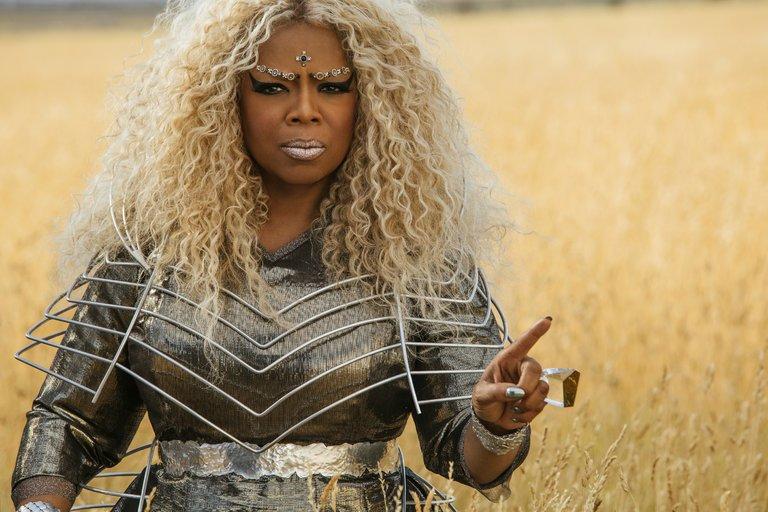Have you ever had the experience of going back to watch a favorite childhood movie several years later, only to realize that it’s not actually very good?n a decade or so there will be a generation of kids who will have that experience re-watching the new adaptation of “A Wrinkle in Time,” directed by Ava DuVernay. It’s got the kind of messages about self-worth and self-acceptance that are especially relevant for preteens, but delivered with all the subtlety of a sledgehammer.
The thing about a lot of supposedly great kids movies — especially from the past decade or so—is that “great” movies from an adult’s perspective and from a kid’s perspective do not always line up. While I have heard plenty of adults rave about “Inside Out” — myself included — I’ve heard far more stories of children not finding it terribly compelling. Considering its message about growing up and leaving childhood behind, it goes over many younger children’s heads.
From its luxurious visuals to its heavy tween-oriented messaging regarding self image, “A Wrinkle in Time” has no conception of the meaning of subtlety, in exactly the sort of way that adult viewers can’t miss but younger viewers hardly notice. While it is, at least for an adult audience, sometimes a little too on the nose, the film is also thematically on the money, both in terms of the battles it picks and, perhaps even more significantly, in terms the battles it chooses not to fight. While there is plenty of drama in protagonist Meg Murry’s (Storm Reid) family—namely, that her father vanished suddenly and without a trace several years earlier—none of it is related to her being the product of an interracial relationship.
The absence of racial identity angst either in Meg’s view of herself or in the film’s portrayal of the relationship between her parents, who are collaborating astrophysicists Dr. Alex Murry (Chris Pine) and Dr. Kate Murry (Gugu Mbatha-Raw), is refreshing. It is a pleasant, though admittedly idealized, escape from the usual depictions of multiracial families, which tend to heavily emphasize the anxieties and insecurities of being multiracial. While seeing struggles you can relate to in cinema is valuable, there is also something to be said for letting some films, especially a fantasy like “A Wrinkle in Time,” truly embrace escapism in its many forms.
Considering how spoiled viewers have been by some truly extraordinary performances from child actors in the past few years, from the young cast of “The Florida Project” to Dafne Keen in “Logan” and Alex Hibbert in “Moonlight,” the young trio at the center of “A Wrinkle in Time” show some hints of that flip-flop between slightly wooden stiffness and earnest overacting for which child actors are relatively notorious, though they are generally commendable for their efforts. While Storm Reid is well styled for the role of Meg Murry — with her plain shirts and flannels and jeans, she resembles an actual moody middle school outcast instead of the typical Hollywood version of one — her preteen angst is generally onenote. That one-note is quite accurate, but also ultimately monotonous.
Meanwhile, Levi Miller as Calvin O’Keefe sometimes seems just a little too suave for even the most charismatic, lovesick puppy of a thirteen-year-old. Deric McCabe’s performance as the odd whiz kid Charles Wallace Murry certainly comes off as weird, but more weirdly unnatural than anything else, once again with considerable help from decidedly stilted writing. To be fair, this issue is not helped by a script and editing that never quite seem to find a rhythm, combining to a finished product with decidedly awkward pacing connected to so many factors that it’s hard to identify the primary culprit.
When it comes to visuals, “A Wrinkle in Time” is a very pretty movie. Paco Delgado’s ornate costumes don’t shy away from jewels and sparkles, and while the extravagance doesn’t feel quite necessary — in general, the film feels like a $50 million film wearing a $100 million budget for no good reason — Delgado’s taste and discerning eye keeps it from descending into the realm of gaudy. While the sweeping CGI landscapes of the film’s various fantasy worlds are generally sumptuous, there are definite signs that they are the sort of “cutting edge” visuals that will age poorly and fast, the most blatant being the giant, green, cabbage leaf creature Reese Witherspoon’s Mrs. Whatsit metamorphoses into, which already looks silly.
“A Wrinkle in Time” has some great strengths and generally represents an important step forward in Disney making genuine improvements in terms of diversity and genuine representation (unlike the “exclusively gay moment” nonsense in “Beauty and the Beast”). However, from a cinematic perspective, it is also disappointingly flawed.






